"CAIRO - ALEXANDRIA" SKETCH BOOK
For the main page see watson, brian at war
This is a small sketch book with pencil sketches and watercolours that depict life there. It was presumably bought in Cairo. It has the name A. BUCCELLATI CAIRO - ALEXANDRIA on the front, presumably the shop or at least the book maker.
The images within show life in the army from this point on. One of the first is of "El Alamein Station", but we cannot be sure that it was actually done first. Other pictures show ships and camps so the sequence of images in the book may not be an accurate sequence of events. Nonetheless it is a fascinating insight to their arrival and progress and are included here as they appear in the book.
My dad had a degree of colour blindness and this affected his choice of paint colour too. You will notice a degree of purple wash.
An address of 44 Oakhill Road is on the back, but I do not know of its relevance - possibly just a memo for someone with him.
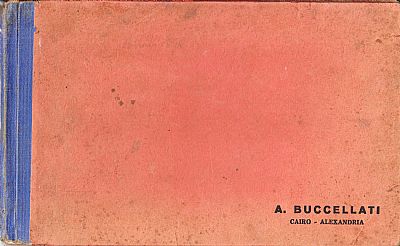 The front.
The front.
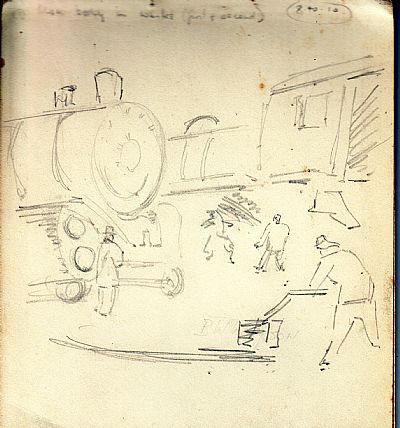
Two train engines with figures. The head covering to the right looks local, but the top hat top the left looks "colonial".
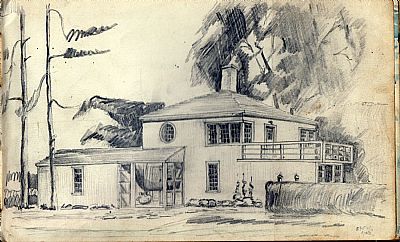
A colonial looking house.
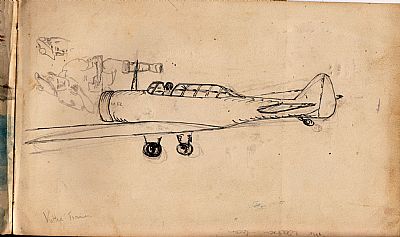
A plane. A small note describes it as a Vultee Trainer. The two figures appear to have Scots bonnets. [The Vultee BT-13 Valiant is an American World War II era basic (a category between primary and advanced) trainer aircraft built by Vultee Aircraft for the UNited States Army Air Corps, and later US Army Air Forces....The United States entered the war, including the North African campaign in December 1941 and began direct military assistance in North Africa on 11 May 1942.] Wiki.
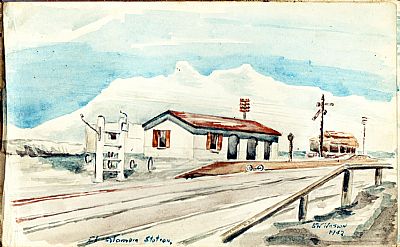
El Alamein Station. Signed BW WATSON 1942.
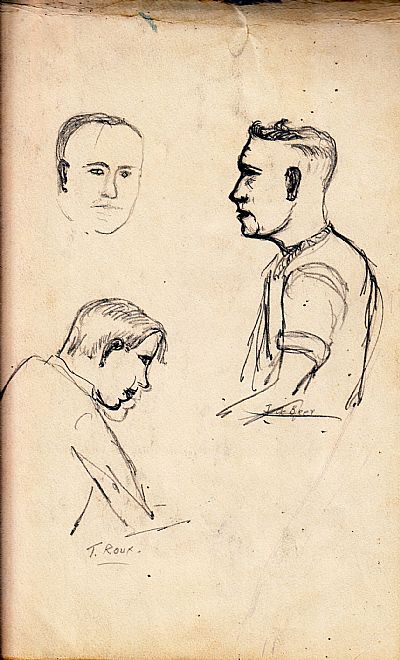
Three figures. Bottom left labelled T. Roux. Top right labelled Jack Beer.
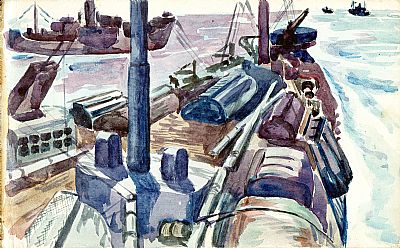
Ship convoy group.

Figures. Top man with rifle at brazier. 3 below peeling potatoes.
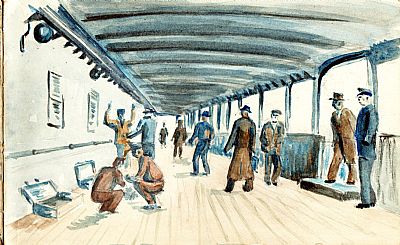
Boarding a ship during war time. The ship's crew members are in navy blue and the soldiers in khaki, but are those civilians or officials in civilian clothes? Luggage is checked on embarckation and someone gets body searched.
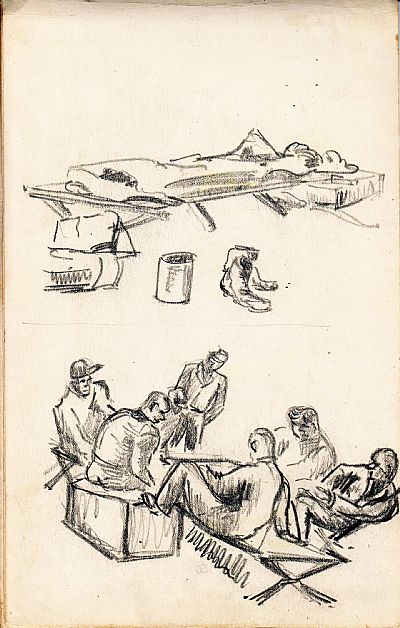
Relaxation time. Are these soldiers or new recruits? They sit about chatting, two on chairs, one on the stretcher and one on the trunk.
Beyond them is an unmade bed on a stretcher with a pair of boots and what appear to be suitcases. Is that a toilet roll or can?
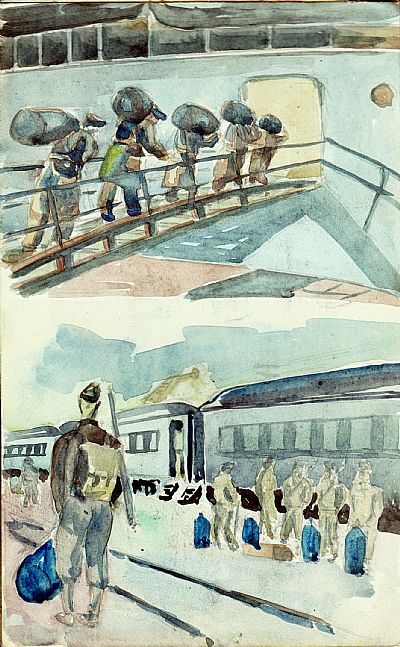
Above, boarding a ship. Below, boarding a train.
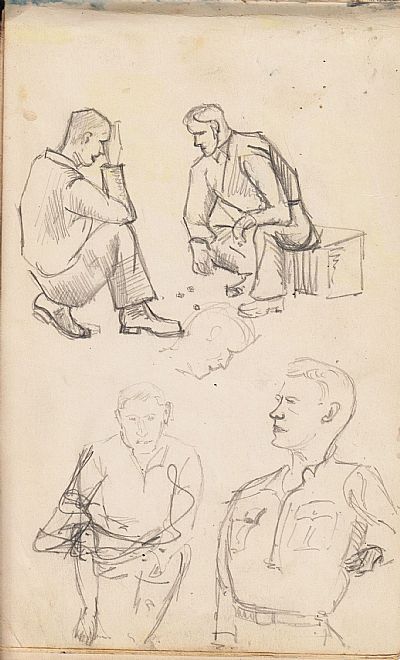
Two guys throw dice to while away the hours, while another two seem to consider their postures.
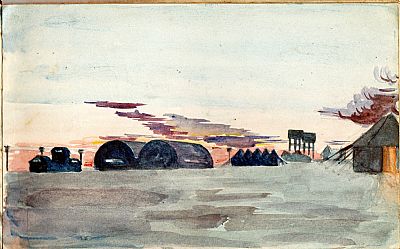
A military base with a desert sunset.
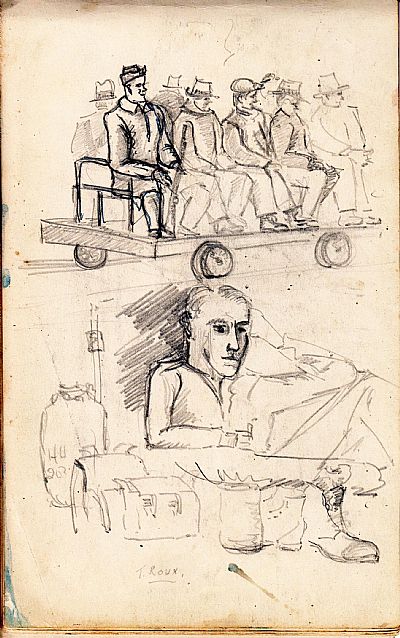
Some men get a lift on a rail dolley. And a soldier relaxing amongst his belongings.
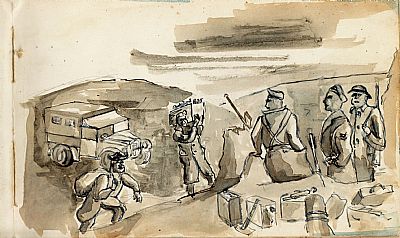
Hunkering down amongst the dunes. This is desert warfare. The supplies are unloaded from the armoured vehicle. A gun is in place.
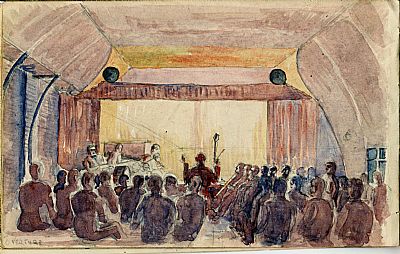
A concert for the troops. A conductor. A fiddler. A pianiast. And one other. Are those basic speakers up there above the curtain?
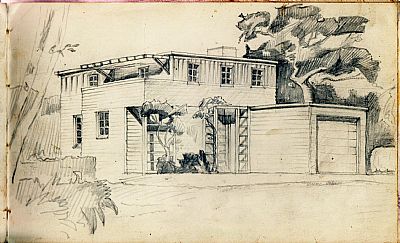
A house.
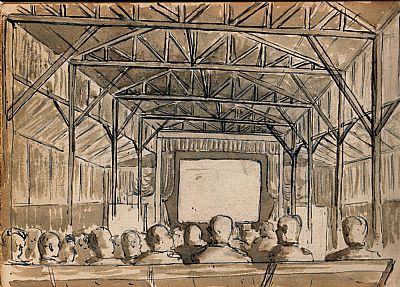
Another hall. This time with movies.
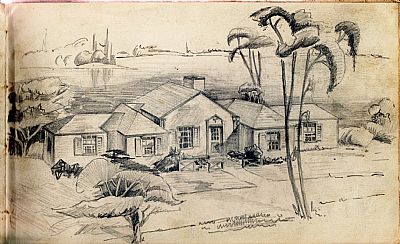
Another house. This one overlooking water.
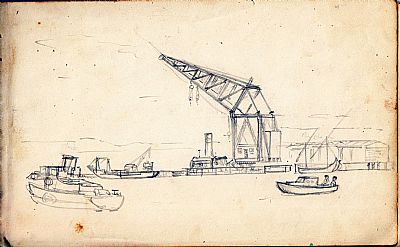
A harbour with a crane and smaller boats. One looks like a dhow.
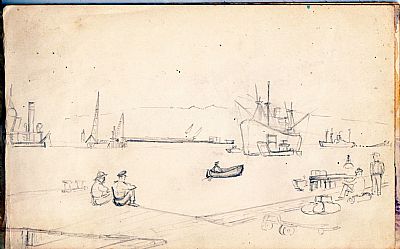
Probably the same harbour, but looking in a different direction. A cargo ship, possibly doubling as a troop carrier appears to be approaching a quay. No anchor chain is visible, but the smaller boats attending it include one on the near side that looks more like a small car ferry or supply craft than a tug and the one on the far side is very small. Perhaps it is at anchor. The small rowing boat is possibly a ferry between the quay and the ship. Two soldier watch on and another two appear to be waiting to be picked up, their baggage next to them.
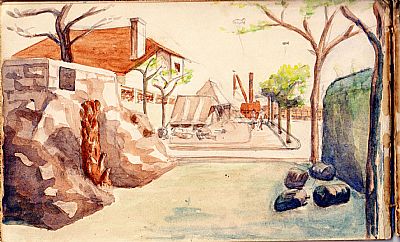
What at first appears to be a large house is more likely an administrative building. A small stone fortification is to the left and discarded bales or drums ltter the small yard. Two tents have been pitched next to the building. In the distance is a crane suggesting that this is near the docks.

A port with what look like two tugs. The two buildings seem to be structures on a barge. Note the barrage balloons flying in the distance. More impressive is the leopard statue on one side of a curved area presumably with steps down to the water. I cannot work out where this is. It may not exist anymore. It may be Cairo where he bought this sketchbook. I am unaware of which route they took to Libya or if they passed through the Suez Canal. It is possibly the latter with the dirty coloured dunes beyond. We sailed through the Suez Canal (with Fred.Olsen in the mid-200s and could still see remnants of war, some of which was against Israel well after WWII.
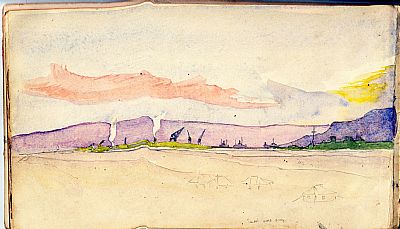
A view across the water to docks. There are some cranes and small ships. The silhouette to the right looks like a naval ship, but is more likely just buildings and a mast. There are two plumes of smoke. In an era where much was steam driven, this was quite common.
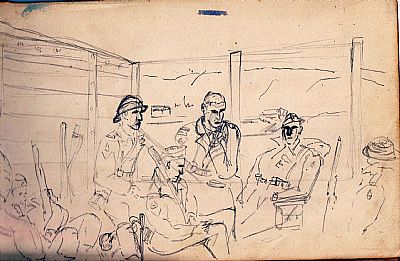
This looks like a dug-out. Heavy timbers hold back the dune sand and in turn that provides protection from small to moderate sized shells. The soldiers hug their rifles, not just for prompt response, but to keep the free of sand. Three wear uniform caps while the other two wear helmets. These helmets look very much like the more comfortable pith helmets than the metal helmets that offer more protection.
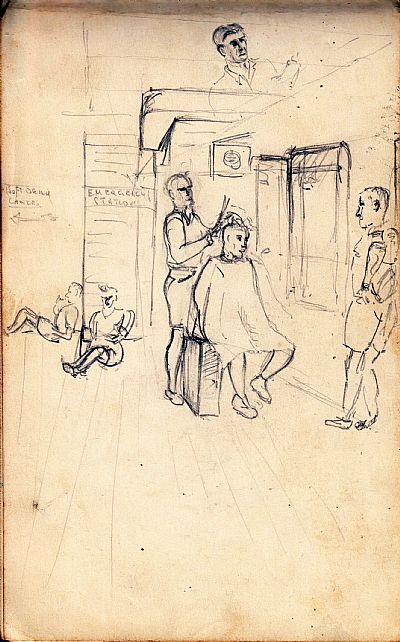
Getting a haircut was not just for military uniformity, it was also healthier in these conditions... and provided a distraction from the monotany.
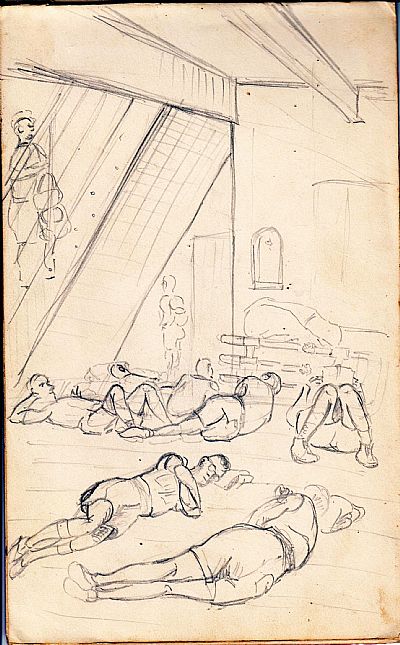
Sleeping on deck. (When we sailed through the Suez Canal in the mid-2000s we found the temperature extremely uncomfortable. At least the air was fresh on deck. Below decks was very likely extremelt stuffy).
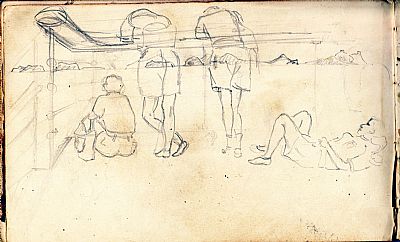
Four soldiers while away the hours staring at the hills beyond from a ship. What were they thinking? What were their feelings? A war setting, but still far from the front.
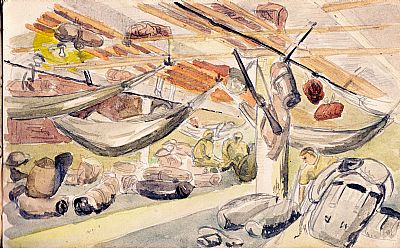
Accommodation below decks on a ship. Hammocks are hung from the deckhead (ceiling structure). There is also a kitbag and some rolled up bedding and a helmet. Three soldiers sit at the other side. Must have been particularly difficult for those not used to the sea. (I slept like this while in the SA navy, an old ship called the Simon van der Stel. The slumped curve is not nice for a sore back and not suitable for a restless night. Bedding had to be tightly bundled each morning with the idea being not only to provide space but to act as boyancy, something to grab onto if we went down).
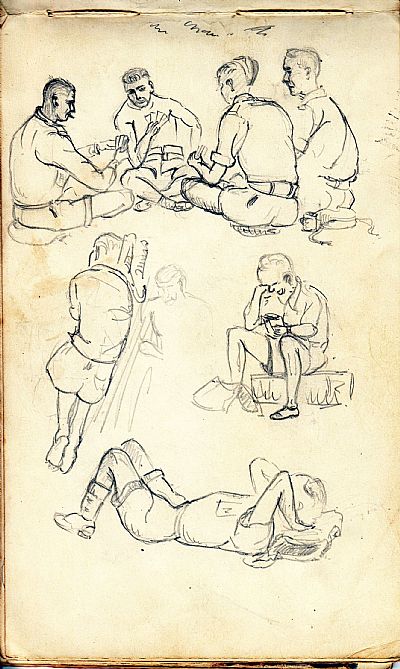
War is far too much excitement or far too little. Here we see a card game in play with sitting about or trying to doze.
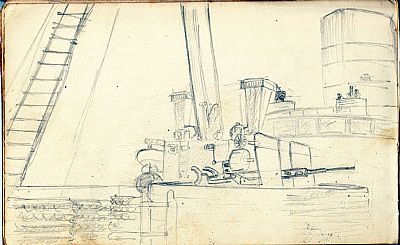
A starboard gun aft of the funnel. Behind it are what appear to be two vents. Old fashioned rigging is to the left, a ladder up to "crow's nest" for watch duty.
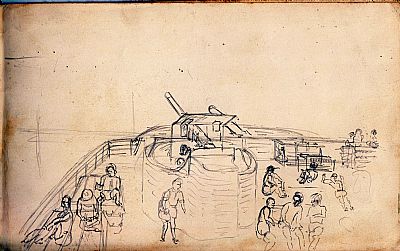
I thinbk this is the rear gun on a ship. Another heavier gun seems to be on the lower aft deck.
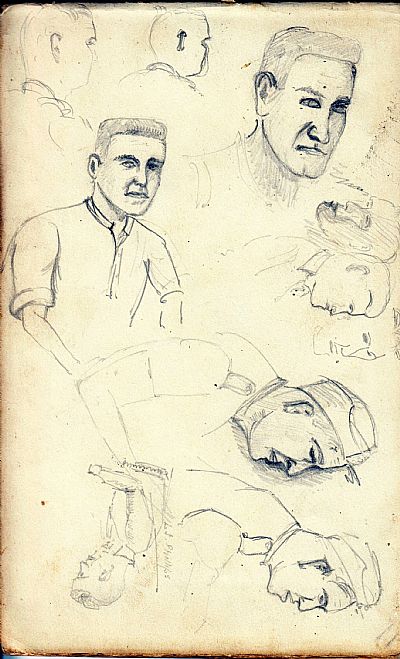
Faces.

Faces.

